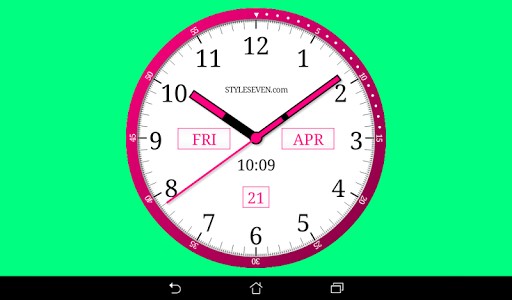
You can of course use your own designs instead, but feel free to use the image files we are using here to get started. We are going to create three clock designs, each with a dial, minute hand, and hour hand. For this project, we will need to target different device screen densities, for which we will create image files at four different scales. We will also create alternative design options with dial, hour, and minute hands. We will therefore create three design elements for each version of the clock widget we want users to be able to choose between. The Android AnalogClock widget uses three images: the clock dial, the minute hand, and the hour hand. This is Part 2 of our series on Building a Customizable Android Analog Clock Widget over four tutorials: In the final part of the series, we are going to implement letting the user choose from a selection of designs for the clock, so we will create three design options here. We will create graphics for different device densities. This will involve creating graphics for the clock dial and hands, as well as implementing the layout in XML. In this part, we will work on the widget design.

In the first part of the series, we create the project, preparing the Manifest file and other resources. In this tutorial series we are developing a customizable Android analog clock widget using the AnalogClock class and custom graphics.

The clock will be based on the Android AnalogClock class and customized with your own graphics. In this series of tutorials, we will work through the process of developing a customizable analog clock widget. Developing widgets for the Android platform involves a slightly different set of tasks than standard app development.


 0 kommentar(er)
0 kommentar(er)
